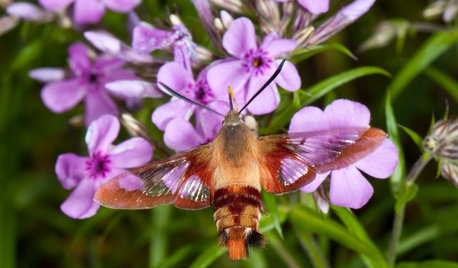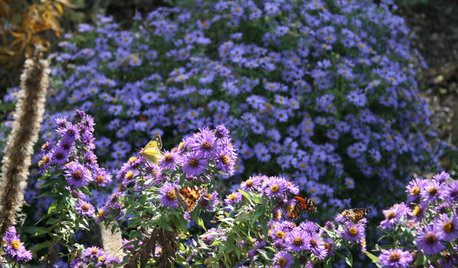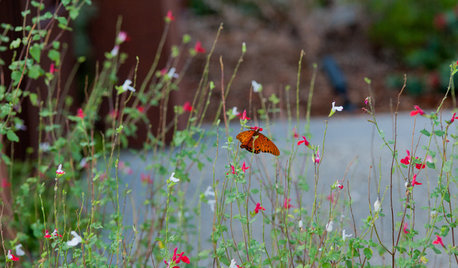Poll: Butterfly vs Moth
saturniidaebreeder
15 years ago
Related Stories

GARDENING GUIDESHummingbird or Moth? See Why You Want Clearwings Around
These fascinating moths may be helpful pollinators for your garden. Here’s how to coax them your way
Full Story
GARDENING GUIDES6 Plants That Beat Butterfly Bush for the Wildlife Draw
It's invasive, a nonnative and a poor insect magnet. Check out these better alternatives to butterfly bush in the garden
Full Story
FLOWERS15 Native Flowers That Attract Butterflies
By picking plants from this list that are right for your location, you’ll get colorful blooms and support pretty pollinators
Full Story
GARDENING GUIDESGreat Design Plant: Asclepias Incarnata for a Butterfly Garden
Beautiful swamp milkweed makes it easy to help monarchs and other pollinators in eastern U.S. gardens
Full Story
GARDENING GUIDES6 Steps to Creating Your Butterfly Garden
Encourage these fanciful winged beauties to visit your garden while helping restore their fragmented habitat
Full Story
FLOWERS AND PLANTSHelp Monarchs and Other Butterflies by Planting Common Milkweed
Summer-blooming Asclepias syriaca is an important larval host plant for the monarch butterfly and attracts a number of pollinating insects
Full Story
GARDENING GUIDESGreat Design Plant: Butterfly Milkweed, a Beacon in the Prairie
Vivacious orange flowers for you, nectar for the butterflies and bees. Asclepias tuberosa is worth planting for more reasons than one
Full Story
EARTH DAYCreate a Container Wildlife Habitat for Hummingbirds and Butterflies
Don’t let limited space prevent you from welcoming wildlife into your garden
Full Story
GARDENING FOR BUTTERFLIESButterfly Gardening: Delight the Eyes With Living Sculptures
Surprise and thrill with a garden that attracts magical winged creatures, bringing color, movement and life
Full Story
GARDENING FOR BUTTERFLIESBe a Butterfly Savior — Garden for the Monarchs
Keep hope, beauty and kindness alive in the landscape by providing a refuge for these threatened enchanters
Full StorySponsored
More Discussions




button20
saturniidaebreederOriginal Author
Related Discussions
Butterfly host plant shrubs
Q
verbena vs lantana for butterflies
Q
very very new to butterfly gardening, have ?
Q
Butterfly Bush
Q
larry_gene
ladobe
KC Clark - Zone 2012-6a OH
MissSherry
saturniidaebreederOriginal Author
ladobe
jmcat
butterflymomok
saturniidaebreederOriginal Author
murray_2008
Nell Jean
todancewithwolves
bttfly9
butterflymomok
jmcat
turtledon
ladobe
saturniidaebreederOriginal Author
butterflutter
butterflymomok
jmcat
ladobe
murray_2008
ladobe
todancewithwolves
LaurelLily
lunalady
jmcat
ladobe